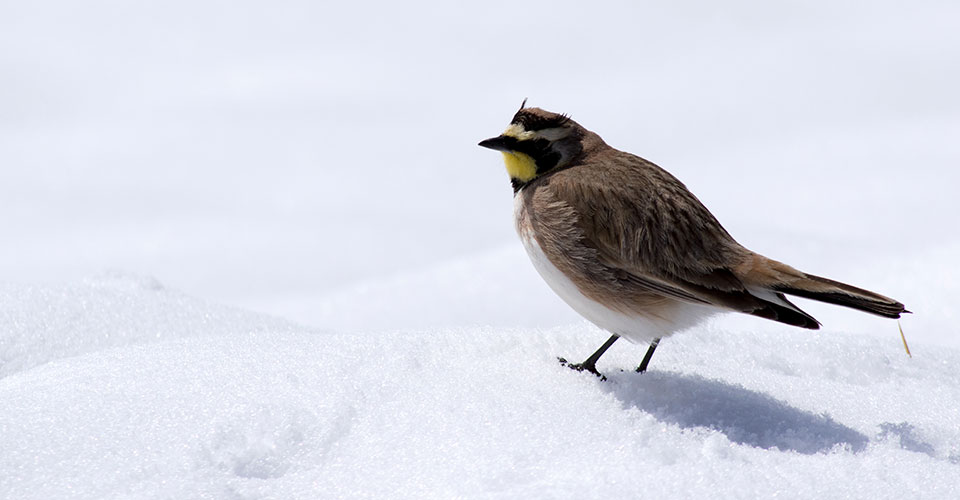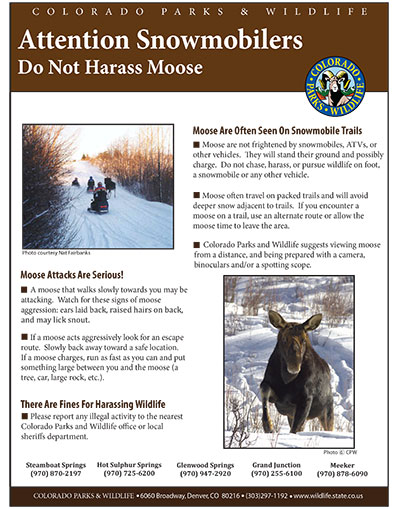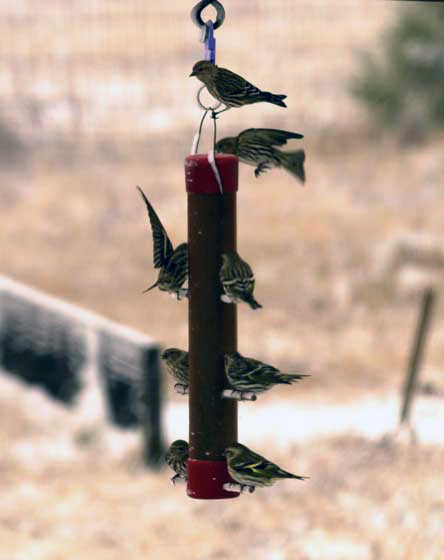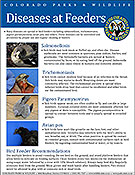
Colorado is a magical place in winter.
Many don backcountry skis or snowshoes and escape the stress and the holiday throngs to enjoy the solitude, peace, and beauty of nature.
Winter offers wildlife viewing opportunities that are not found at any other time of the year. As the snow deepens in the high country the animals move to wintering grounds in lower elevations and valley bottoms. Animals you can see in winter include moose, deer, and furbearers such as marten, ermine and perhaps a rare glimpse of bobcat or cougar. Birds abound in this icy wonderland—jays, woodpeckers, chickadees, nuthatches, and owls.
Please Maintain Distance - Winter is a Stressful Time

Wildlife viewing ethics are particularly important during the winter. Maintain distance and do not cause animals to change their behavior.
In winter, animals are under stress from cold and reduced food supplies; being chased may cause them to lose critical fat—which may threaten their survival. You are using more energy, and so are the animals.
See a
list of helpful wildlife viewing tips.
Backyard Bird Feeding

Feeding birds is probably one of the most popular wildlife related activities in Colorado during the winter months. Anyone can participate and learn about the various birds that winter here. However, there are some things to watch out for when you start feeding birds in your backyard.
Birds are like any other animal...to survive the rigors of winter they need food, water and shelter. Adding feeders and a water source to a backyard with trees and shrubs will make an attractive bird haven. Because birds have such a high metabolic rate and can’t store energy in the form of fat, certain types of bird seed are more attractive. Different species will be drawn to different kinds of feeders and seeds, but in general black oil sunflower seeds are the cheapest, most available and beneficial type of food to offer birds. Thistle seed is a good but expensive seed to provide for small birds. the tiny seeds must be provided in a special thistle seed tube feeder. In mountain areas suet feeders are preferred by most of the birds residing there. Suet is simply beef fat.
Also make sure to place your feeders high enough and away from shrubs or other cover so housecats
 can’t prey on the birds. It is important to regularly clean feeders to reduce the incidence of disease or spreading of disease from infected individuals. A third of a cup of bleach to a quart of water will usually do the trick. After scrubbing a feeder and rinsing it out make sure it is completely dry before re-filling it.
can’t prey on the birds. It is important to regularly clean feeders to reduce the incidence of disease or spreading of disease from infected individuals. A third of a cup of bleach to a quart of water will usually do the trick. After scrubbing a feeder and rinsing it out make sure it is completely dry before re-filling it.
For more information, see the
Diseases at Feeders fact sheet.
Chickadees, sparrows, finches and siskins are among the most common birds seen during winter in Colorado.
Winter bird feeding can continue well into spring when food sources become more abundant, but should be removed immediately if bears and other wildlife are attracted to the feeder that could cause unwanted disturbance. See the Bears and Bird Feeders: What You Need to Know brochure.
Once the work of setting up your feeders is completed you can sit back and enjoy watching them from the comfort of your home, taking just a few minutes each day to refill the feeders.

